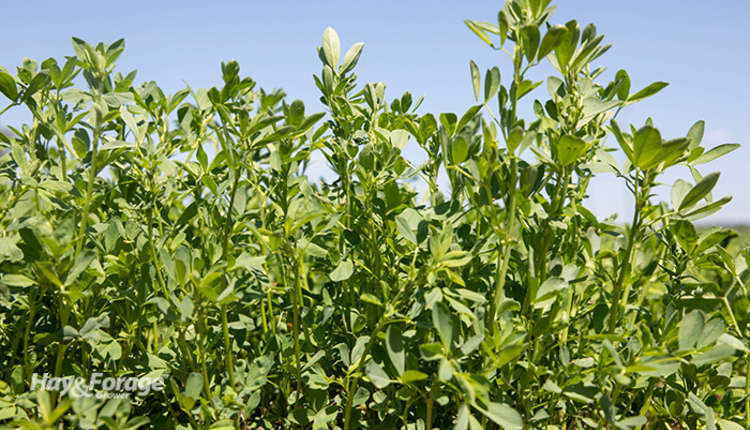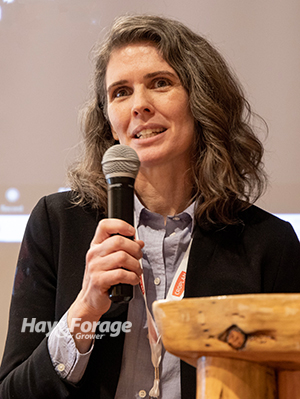
Let’s be clear: Alfalfa doesn’t match perennial pasture when it comes to soil carbon storage, but it’s a whole lot better than annual row crops such as corn and soybeans.
As the dairy industry moves toward greenhouse gas neutrality, much research effort is being done on the impact of various cropping systems and species on carbon capture in the soil. One such scientist working in this space is Alison Duff, a research ecologist with the U.S. Dairy Forage Research Center (DFRC) in Madison, Wis.
In one of Duff’s recent projects, she evaluated soil health and soil carbon balance in three alfalfa fields and three corn silage fields at the DFRC’s research farm in Prairie du Sac, Wis. All of the fields had similar cropping histories, which included both corn grown for silage and three to four years of alfalfa in rotation. The project’s alfalfa fields included a new spring-seeded field, a second-year field, and a third-year field.
The exchange of carbon between the soil and the atmosphere was measured throughout the growing season. Duff also evaluated soil physical characteristics, nutrient availability, and soil carbon fractions.
The cornfields and older third-year alfalfa stand lost carbon during the sampling year, but the first- and second-year alfalfa stands accumulated carbon. Due to varying degrees of historical soil erosion, the landscape position of a sampling site (for example, hillside versus level ground) had a greater impact on soil health metrics than the crop type.

The researcher noted that a previous study done in Minnesota by USDA scientist Josh Gamble showed that soil carbon losses were 23% greater in continuous corn for silage systems than in corn silage-alfalfa rotations.
Duff also pointed out that more diverse cropping rotations that include alfalfa are more resilient to extreme weather events. She noted that research has shown that corn yields were higher, even during drought years, in fields where corn was grown as a part of a diverse crop rotation.
Perennial forage crops extend the growing season and the ability to capture carbon over a longer period of time. At the Prairie du Sac farm, research has shown that pasture, grassland, and woodland, which all combine to cover 60% of the farm’s footprint, stored enough carbon to offset 40% of all the greenhouse gas emissions generated by the farm.
Depending on the farm operation, there are many roads that can lead to a “net-zero” greenhouse gas balance. “Alfalfa is a suitable choice for many operations interested in including a perennial legume in the crop rotation,” Duff said. “For farmers interested in grazing heifers, dry cows, or lactating animals, pasture acres can provide additional, long-term benefits for farm carbon storage.”

